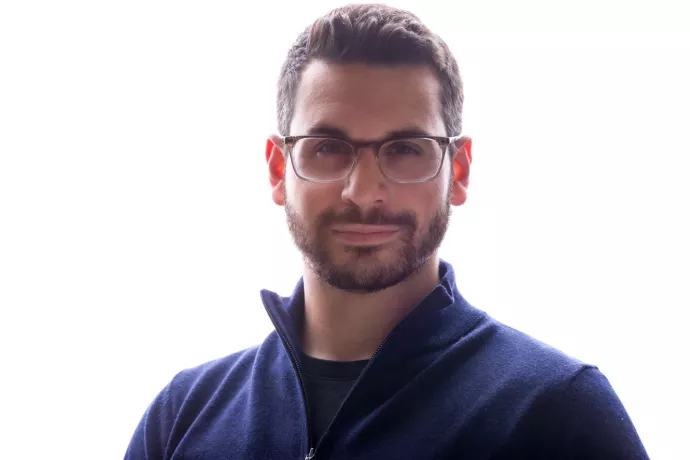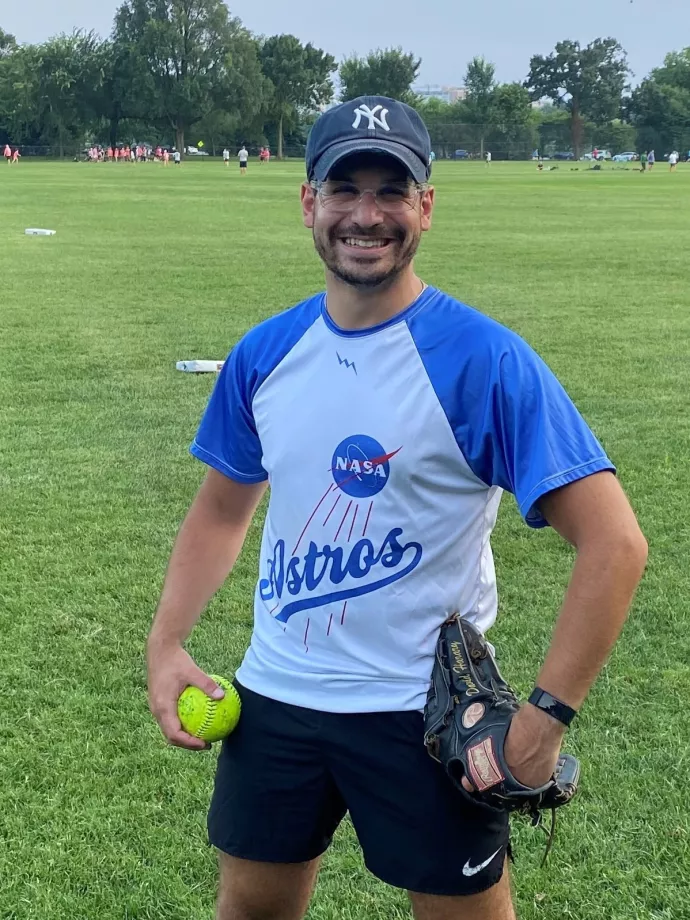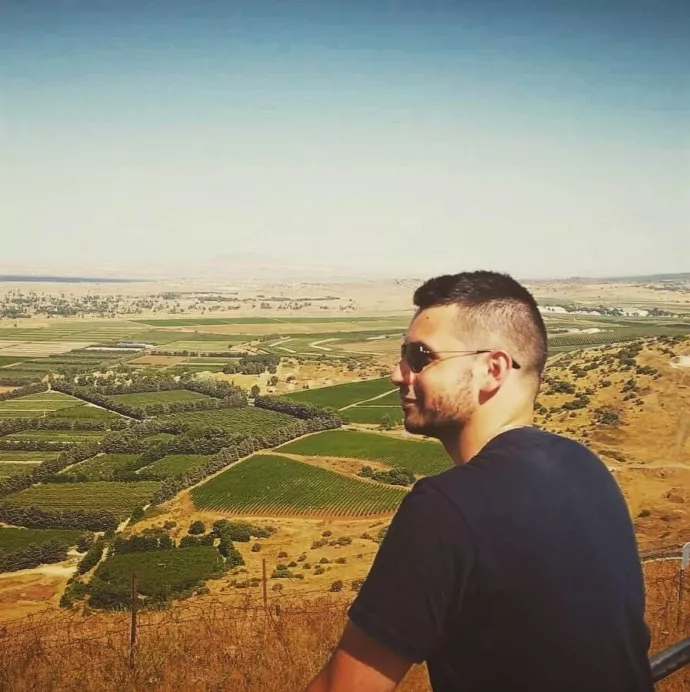Space Acquisition, The Pentagon, and Sustainability: A Q&A with David Harary

Named as a Top 30 Under 30 Leader in Sustainability by GreenBiz and Corporate Knights Magazine, David Harary (MScSM, 2017) has built his career around space-based remote sensing programs at NASA, the National Oceanic and Atmospheric Administration, and the U.S. Department of Defense. He currently supports the Air Force for Space Acquisition, Technology, and Logistics at the Pentagon.
It’s only been four short years since he graduated from the Master of Science in Sustainability Management program at the Institute for Management and Innovation (IMI) at the University of Toronto Mississauga (UTM), which makes his extensive list of experience and achievements even more inspiring.
David’s research and writing is frequently published in top scientific journals, and he runs a sustainability think tank in D.C.. He took a break from his very busy schedule to chat with us about space acquisition, the link between national security and the climate crisis, and playing on the NASA softball team.
Your BA was a triple major in economics, international trade and geography at the University of Buffalo. Can you tell us what attracted you to the Master of Science in Sustainability Management program at IMI?
I was immediately drawn to the University of Toronto when my undergrad geography professors told me about the school. A top global university with three gorgeous campuses spread across one of the world’s most cosmopolitan cities? Yes please! It was a further surprise when I learned one of the most important founders of the environmental security field, Thomas Homer-Dixon, had done his formative research while a professor at U of T. But most importantly, I had to find the right program for this very unique field I wanted to go into.
The MScSM program was perfect because it stuck out as a new, innovative curriculum designed for the unprecedented challenges of the 21st century. The combination of using rigorous scientific processes mixed with the practicality of a business school was exactly what I was looking for in a program focused on sustainability and resilience. It was especially attractive that I could benefit from U of T’s interdisciplinary strengths by taking coursework at any other U of T campus.
Can you talk a little about your experience as an international student at UTM?
While, on the surface, Canada is obviously very similar to America, I found there to be countless cultural quirks that reminded me I’m in a different country. For example, Canadians seem to be quite environmentally-focused and in tune with their surroundings. There’s a real down-home, almost country feeling you get, even in Toronto. The winding parks, groves, and trails also help make you feel connected to nature despite being in a metropolis. I love that.
Toronto’s culture is also pretty different from most other American cities. The city is a true mosaic of diversity. That international outlook is reflected throughout U of T. The university is fast-paced, innovative, dynamic, and forward-leaning. The students are curious. The professors challenge you. That environment made it very easy for me to be motivated and driven to explore both academically and physically throughout the city. Pro-tip - if you’re living in Toronto: get a bike.
Your career path from graduation to the Pentagon is fascinating. What was it like to work for NASA?
I interned at Headquarters in D.C. back in 2014. NASA’s people are what make the agency so great. They come from all walks of life, backgrounds, fields of interest. But they all have this passionate curiosity about the way our universe and planet work.
NASA introduced me to the intersection of space and environmental science. I learned how satellites 190 to 23,000 miles away from Earth play an incredibly important role in delivering us our weather and environmental data. I became hooked on this idea that you can gather such a huge amount of information about our planet from space. It was that internship that gave me the idea to work on space-based environmental monitoring satellites in my career. I made some great connections there, and I still play on
NASA’s softball team every summer.

David, your current role at the Pentagon pertains to space acquisition. Can you explain what that means?
I work for OBXtek Inc. in support of the Space Programs Directorate of the Office of the Assistant Secretary of the Air Force for Acquisition, Technology, and Logistics. Our Directorate oversees Space Force research, development, acquisition and program sustainment activities totaling an annual budget in excess of $16 billion for more than 80 acquisition programs. Those programs include GPS, communications, missile warning, and environmental monitoring satellites.
Acquisition refers to the process the Department of Defense uses to initiate, design, develop, test, contract, produce, deploy, modify, and dispose of weapons and other systems, supplies, or services to satisfy needs in support of military missions.
You talked about a secondary role at the Pentagon where you work with a group who focus on the environmental security risks that relate to national security. Can you tell us more about that?
I volunteer as the Membership Lead of a community of interest in the Department of Defense called RECESS, which stands for Resource Competition, Environmental Security, and Stability. The group convenes twice a month to examine the environmental factors of national security, and what that means to the threats moving forward. RECESS provides a network of people from across the department, the intelligence community, and other governmental organizations. We’ve had presentations by outside experts, including from the State Department, think tanks, and academia. It’s a really great organization to be involved with.
You also started the Center for Development and Strategy, a policy think tank focused on development, sustainability and human rights. Can you share a little about your goals with this endeavour?
I designed CDS to be laser-focused on the very unique and complex security challenges that have arisen in the 21st century. Our planet’s rapidly degrading environmental quality has cascading consequences to our health, security, and economy. I’ve wanted CDS to be more than just another D.C. think tank that talks about these issues. It’s now evolved into a brand that coalesces passionate advocates of the change we seek. My goal for CDS is for it to make an impact on how others perceive, understand, and relate to war. That economic development and the sanctity of biological diversity matter greatly towards the prevention of conflict. I really believe we need to spread this message as climate change continues to devastate communities and lives.
In your experience, how does sustainability relate to peace and conflict?
The breakout of the Syrian Civil War in the early 2010s caught my attention. With a Syrian family background, I’ve always had my eyes on the Middle East. Reports came out that a severe drought in the region that had begun in 2008 was 2-3 times more likely because of climate change. That drought, combined with existing scarcities forced the price of wheat to skyrocket. Young farmers who could no longer make a living were forced to migrate from Northwestern Syria into cities like Homs, Aleppo, and Damascus. Unsustainable government practices aggravated poverty and food insecurity further.
Numerous food riots broke out across the Middle East and Africa, which eventually would become what we refer to as the Arab Spring. Inadequate access to food and water, combined with existing economic and social strife, lead to increased competition and, in Syria’s case, eventually conflict. The sparks of an unsustainable economy and environment were fanned by a corrupt and inept government. The resulting fire has killed over 500,000 people and forced over 5 million into refugee status. The security implications of climate change are often complex and varied, but very real.

I don’t think most people realize the connection between sustainability and national security. Could you expand on that idea?
In my mind, sustainability and security are really two sides of the same coin. You can’t have one without the other. Both terms imply long-term homeostasis for a community of organisms, and in this case that means society. The underlying reasons for conflict are often extremely complex, but when you look at the foundational aspects of it – it usually has to do with some kind of unsustainable balance of resource allocation, misalignment of inter-cultural understanding, and of course historical cross-directional injustice. The environment has always played a major role in war and conflict, and often via the scarcity of resources. The lack of adequate food, water, shelter and energy can drive competition over those resources between groups. We see in an era of climate change that such scarcities are likely to increase over the next several decades.
Climate is a baseline foundational aspect of ecological systems, our economy and trade, and how our society is shaped. A rapidly changing climate means that foundation will break like tectonic plates violently crashing into one another. The resulting earthquakes will ripple through societies and provide a feeding ground for conflict and war to breakout. A society and economy that is out of balance from its natural environment is destined for chaos. The solution to our long-term security challenges is therefore managing these complex systems in a way that is more sustainable. Sustainability is the answer.
What message would you like to share with current students who are about to take the first steps in their careers?
Listen deeply to what you are passionate about and be willing to create your own path. I often think using a bit of creativity to connect and combine differing fields, ideas, concepts into one can be very helpful towards establishing a personal mantra and purpose. I’ve been lucky to find a nexus where my love for the natural environment and my inner mission to mitigate war meet.



